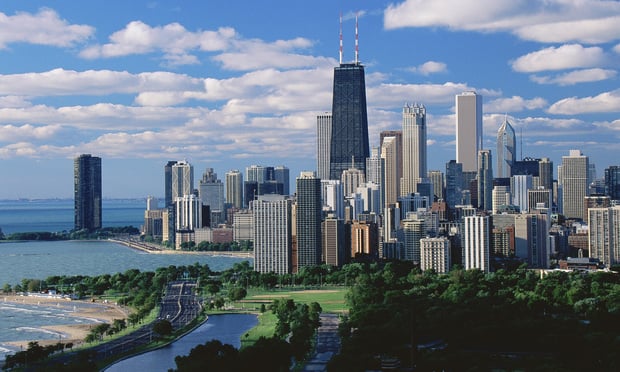The office direct vacancy rate in Chicago, for all office buildings including single tenant buildings and privately owned buildings, declined to 11.6% in the third quarter from 12.3% during the same period last year. "The office market is as healthy as we have seen since 2000, the industrial market is at the peak of the cycle (and) investment sales have set record setting volumes," Leisch says. The vacancy rates for office space and industrial space, which is currently at 9%, are slightly higher than the national averages because Chicago has "more mature" space with "an embedded inventory of obsolete space," he says.
There is currently 7.5 million sf of office space in the Chicago area under construction but Delta Associates is expecting the vacancy rates "to remain relatively constant" for both the suburbs and Chicago submarkets, he says. "We expect demand and delivery to pretty much be in equilibrium for both the downtown and the suburbs," with the demand at about eight million sf annually and deliveries to be about 8.8 million sf annually, Leisch says. Rental rates are likely to increase each year through 2009 "with the downtown (rates) moving up more sharply than the suburbs," he says. For industrial space, new deliveries of 18.3 million sf are expected to outpace demand of 13 million sf, which is expected to decrease the rate at which rents are going up from 3% to 2%.
Delta Associates is predicting job growth to continue but at a slower pace than this year's 60,000 new jobs. An average of 30,000 new jobs are expected in the Chicago area annually through 2009. More importantly, though, the company says the majority of jobs created will be "high quality." This year, 82% of the jobs created are "high quality, high paying, office-producing jobs" with companies and employees that "rent office space, who consume high retail goods, who rent class A apartments (and) who buy high-end condos," he says.
Youguo Liang, managing director and global head of research for Prudential Real Estate Investors, spoke of the national economy at the event. Liang said there will be rising cap rates and a stronger corporate sector, along with a weaker consumer sector. Liang said that the old adage of "location, location, location" has been modified to "location, cost control and green." He predicts that office buildings being constructed will have to be "green" in order to be competitive. "There is no future for office assets going forward if not LEED certified," he says.
© Touchpoint Markets, All Rights Reserved. Request academic re-use from www.copyright.com. All other uses, submit a request to [email protected]. For more inforrmation visit Asset & Logo Licensing.






